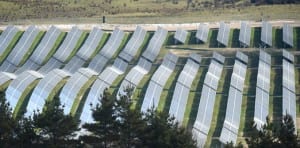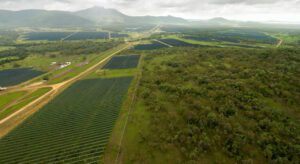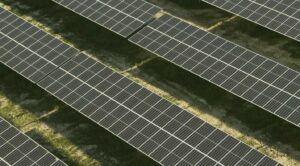Australian technology developer Vast Solar has begun construction of a 6MWth (1.1MWe) concentrated solar thermal power station with three hours storage – the first stand alone plant of its type to be built in Australia.
The Jemalong project near Forbes, in western NSW, will be the first in Australia to integrate storage into a stand-alone solar power station and provide electricity to the grid, on demand at night as well as day. And, Vast Solar CEO Andrew Want suggests, it will be able to do it for around the same cost of wind energy.
The company is already working on plans for larger plants, including a 30MW facility with four hours storage, but its ability to do that in Australia is now compromised because the Abbott government is removing the institutions (the Clean Energy Finance Corporation and the Australian Renewable Energy Agency) that could help finance those first commercial-scale plants.
Want says the company is looking for opportunities in NSW and other sun-rich states such as Queensland, WA, and South Australia, but it is also looking at international markets such as the Middle East, US, Africa, South America and India, where such plants are being built.
CST technology with storage – and the ability to dispatch electricity on demand – is seen as a crucial component of future grids that will feature large amounts of variable generation from wind and solar PV. The International Energy Agency last week predicted that CST plus storage could account for 11 per cent of the world’s electricity needs by 2050.
The key is bringing down costs. Vast Solar CEO Andrew Want said the company set out five years ago to develop a low-cost, high performance CST system that could compete commercially.
“We believe we’ve done that, and this pilot project will demonstrate our system from ‘sun-to-storage-to-grid,” Want said. He said that within a few years, the technology could be delivering electricity on demand at around $100/MWh. This was close enough to wind, with the added advantage of being “dispatchable”.
At that price, Want said, projects such as those aspired to in Port Augusta, where the local community wants to replace ageing coal-fired generators with solar power, would make economic sense, as it would in off-grid mining projects and other applications. “This has the potential to change the face of the CST market around the world,” Want told RenewEconomy in an interview.
The key, though, is government support if the next scale, commercial project is going to be developed in Australia, or follow other technologies overseas. The $10 million project is being backed by ARENA ($5 million), which the government announced last week it would close, despite pre-election promises to keep it open.
Want said the plant could not have been developed without ARENA, which had been working with its private investors for the past three years, and had supported a smaller trial testing phase (pictured above). He said the support of ARENA or the CEFC was essential if the next phase was to take place in Australia. “It’s a huge leap for private investors to take all of that risk. Our main challenge is now, ‘how do we stay in Australia’?”
Want said the company began with just three founders and no funds, and now employed over 20 people.
“We’re growing fast. Our market is global, but we’ve developed all our technology locally. This is precisely what Australia should be doing – investing in new businesses, new employment and new industries for the future, to compete in global markets.”
ARENA CEO Ivor Frischknecht said: “It’s an excellent demonstration of how ARENA invests along the innovation chain – from early lab research to pre-commercial deployment – to advance renewable energy technologies.”
The Abbott government has vowed to close ARENA as part of its plan to close down all renewable energy programs to protect the coal industry, but it has to pass legislation to do so, and its fate will be decided by the Senate, Arena CEO Ivor Frischknecht said.
 The Jemalong plant, which will supply electricity into the main grid by the end of the year, is rated as 6MWth (thermal) and 1.1MWe (electric). It features five solar arrays that comprise 3,500 heliostats or mirrors, 5 towers less than 30 metres high with thermal energy receivers, and a thermal energy storage system providing enough energy for 3 hours’ full power operation at 1.1MWe (3.3MW storage).
The Jemalong plant, which will supply electricity into the main grid by the end of the year, is rated as 6MWth (thermal) and 1.1MWe (electric). It features five solar arrays that comprise 3,500 heliostats or mirrors, 5 towers less than 30 metres high with thermal energy receivers, and a thermal energy storage system providing enough energy for 3 hours’ full power operation at 1.1MWe (3.3MW storage).
The mirrors capture solar energy as heat, and the heat is stored and then released as needed to generate steam to drive a traditional turbine for electricity generation, or for industrial processes such as meat processing, brewing, or minerals processing.
The key to Vast Solar’s technology – and its stated low-cost profile – is in the heat transfer fluid and how that is integrated into the system. Want is keeping details of that close to his chest. Other CST plants are using molten storage, and one Australian firm used graphite, but Want is not saying.
CST systems were first deployed over 100 years ago, but recent advances have seen a resurgence of large-scale CST projects in the US, South Africa, and the Middle East, South America and Europe.
The Crescent Dunes project in Nevada is the largest, and will be 110MW when it is opened next year and will be able to provide power 24/7. It is also looking for opportunities in Australia.
Want said that CST power is important for Australia and for many sunny regions around the world.
“Solar thermal power plants store the sun’s energy very efficiently and at large-scale, so solar can be used to deliver power when it is most needed and most valuable, day or night.”
Want says Vast Solar’s innovations come through the use of small array modules, with low-profile towers; a very different approach to the most recent large-scale, single tower projects, such as Crescent Dunes.
The Jemalong plant will be mainly for R&D, but it will provide enough electricity (around 2,200MWh) for around 400 average homes.









